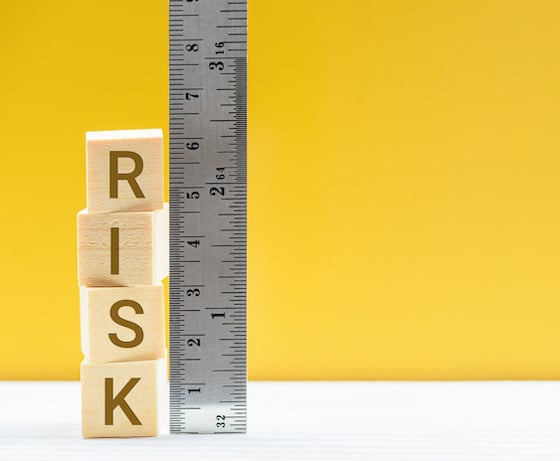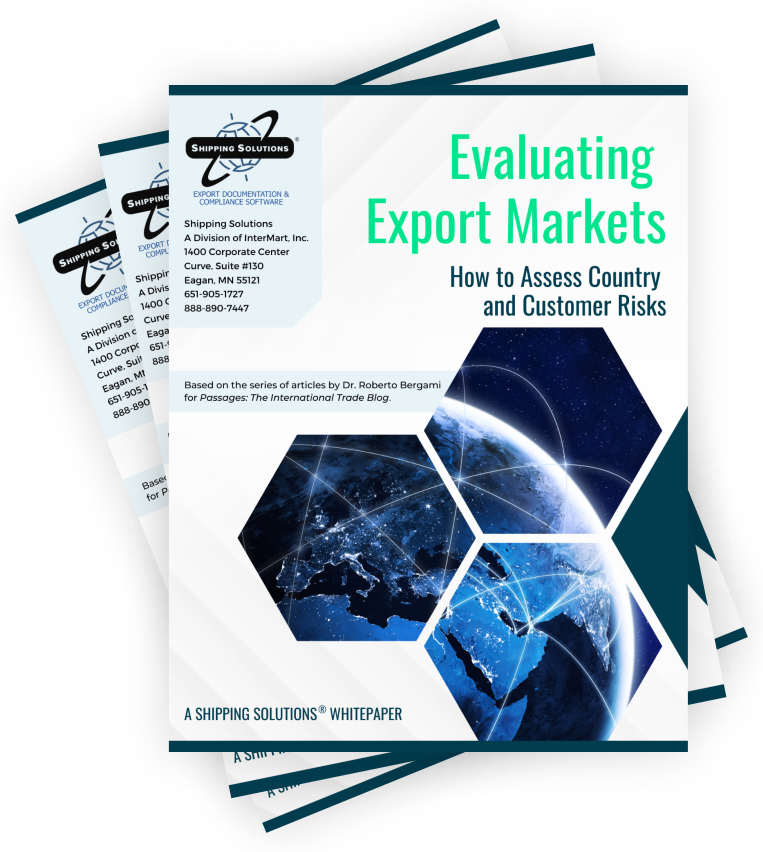The International Trade Blog International Sales & Marketing
Import-Export Due Diligence: Assessing Country and Customer Risk
On: September 6, 2023 | By:  Roberto Bergami |
4 min. read
Roberto Bergami |
4 min. read
 Any entrepreneur interested in exporting to a foreign country or importing goods from abroad is inevitably faced with assessing the risk of doing business with both the relevant country and the particular customer or supplier.
Any entrepreneur interested in exporting to a foreign country or importing goods from abroad is inevitably faced with assessing the risk of doing business with both the relevant country and the particular customer or supplier.
Risk assessment is something that should be done by any entity. The process of assessing risk varies from organization to organization and industry to industry simply because the context and, therefore, the variables are not the same.
Understanding Risk in International Trade
The International Organization for Standardization publication, Risk Management—Guidelines, (publication ISO 31000:2018), outlines a basic approach to managing risk. The world's first risk management standard was published by Standard Australia/New Zealand in 1995, and through subsequent amendments and enhancements, these standards were ultimately incorporated into the ISO standards some 14 years later. The risk management process is outlined in a diagram on the ISO website.
The process of risk assessment starts with the determination of the risk context. This is extremely important because to manage risk one needs to know what they are managing and how processes and procedures work. Once the risk context is known it needs to be assessed. Risk assessment typically starts with the identification of risk, an analysis of that risk and the evaluation of that risk. The last step in the chain is the treatment of risk.
In looking at the figure referred to in the link above, it can be observed that communication and consultation, as well as monitoring and review, are processes inherent in the risk management process. This is because the risk management standard follows an Enterprise Risk Management (ERM) approach, one where all key stakeholders are involved in the risk management process.
Enterprise Risk Management
ERM is the opposite of the silo mentality that quarantines and compartmentalizes decision-making processes from other parts of the organization. For example, sales and marketing decide on terms of payment for export sales without consulting the finance area. The most important thing to remember about risk management is that it is not the person or the department that carries the risk, but the enterprise as a whole! It should be remembered that a person does not work for the department or a manager, they work for the enterprise and, consequently, it is about ERM in the context of managing risk.
The biggest risk to any organization is humans. We are imperfect beings capable of individual thought and incapable of cloning actions. Whilst individuality is a wonderful human trait that provides diversity and innovation, from a risk management perspective these variables are problematic.
With risk, we want to define and contain processes, so we have certainty of outcomes as much as possible. To highlight the differences in humans, why is it that a group of students sitting for the same exam achieve different grades? Or why is it that if a person does the same multiple-choice test twice they do not necessarily get exactly the same answers? In this context, a machine is preferable to a human because the machine will keep repeating the same process exactly the same way it was programmed, good or bad as the case may be, whereas humans are less predictable.
Having said this let me reassure the reader that I am not advocating that computers should run the world. I still fundamentally believe that humans are higher-order beings; we may just need to be a bit more disciplined about what we do to achieve better outcomes.
Managing Risk
Risk is omnipresent; it is inherent in every process of everyday life be it private, social or business. Risk is unavoidable, and that is why it is important to manage it, for if you do not manage risk, it manages you—not a good position.
Risk is managed according to the perception of risk. This perception is based on overt or covert knowledge. We know about something, or we suspect something. We then react to these stimuli. Risk acceptance (known as risk appetite) varies from individual to individual and enterprise to enterprise. It is difficult to say this amount of risk is wrong or not as it depends on how people view risk.
We are all different and have varying perspectives on things. Are people who do bungee jumping crazy or just having fun and seeking an adrenalin rush? Some might say it is probably safer if you just have an adrenalin injection. The point is that the bungee jumpers have assessed that risk as being acceptable, and the non-bungee jumpers have not. Neither group is right nor wrong, they are just different in their risk assessment.
Ok, but how does this relate to country risk and customer risk?
Gathering Data to Manage Country and Customer Risk
The assessment of country and customer risk needs to be done not only based on likes and dislikes or preferences, but it must take a more scientific approach. That is, data must be gathered about particular countries and customers to make an informed assessment with all key stakeholders to achieve the best outcome for the enterprise with as little bias as possible.
In the next several articles I will draw on data from four publicly available sources and provide examples of how these data may be used to construct a profile of a country. I will also provide some suggestions about researching customer risk.
Like what you read? Join thousands of exporters and importers who subscribe to Passages: The International Trade Blog. You'll get the latest news and tips for exporters and importers delivered right to your inbox.
This article was first published in March 2013 and has been updated to include current information, links and formatting.

About the Author: Roberto Bergami
A full time member of staff at Victoria University, Melbourne, Australia, since 1998, Roberto holds a PhD (Thesis title Risk Management in Australian Manufacturing Exports: the Case of Letter of Credit to ASEAN), a Master in Education and Master of Business by Research (Applied Economics). Roberto additionally holds the Certified Documentary Credit Specialist qualification.
He is currently a Senior Lecturer in the College of Business and Visiting Professor at the University of South Bohemia in Ceske Budejovice, the Czech Republic. Roberto is also an Associate Researcher of the Centre for Cultural Diversity and Wellbeing and the Centre for Strategic and Economic Studies. Roberto has maintained his involvement with industry through a number of peak associations where he enjoys various grades of senior level membership.
Roberto’s main areas of research interests in international trade focus on government regulations, delivery terms (Incoterms), international payment terms and market entry barriers. His other research interests include the development of communities of practice, online teaching and online communities, migration from Emilia-Romagna (Italy) to Australia and teenage/youth dialect.



